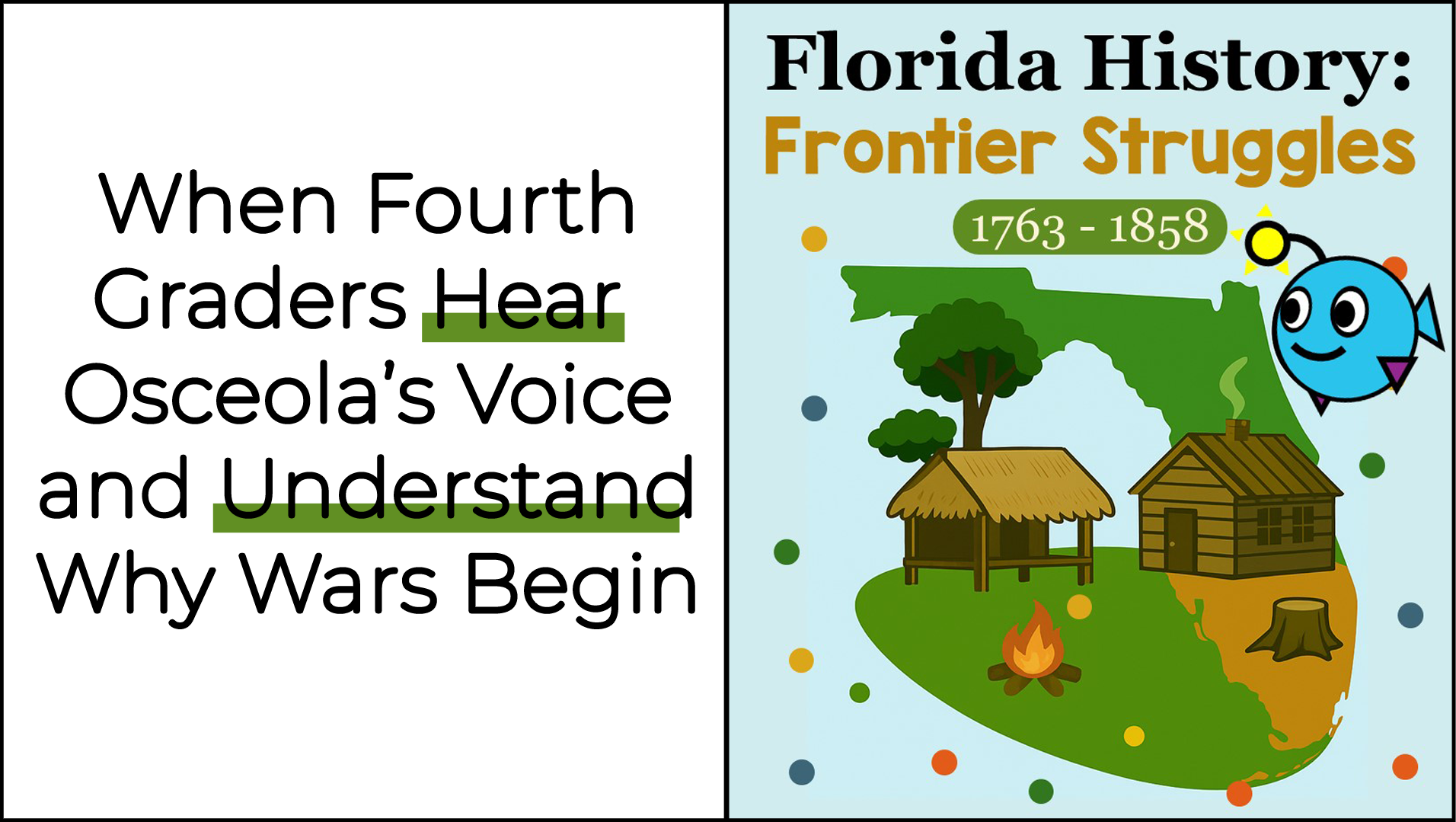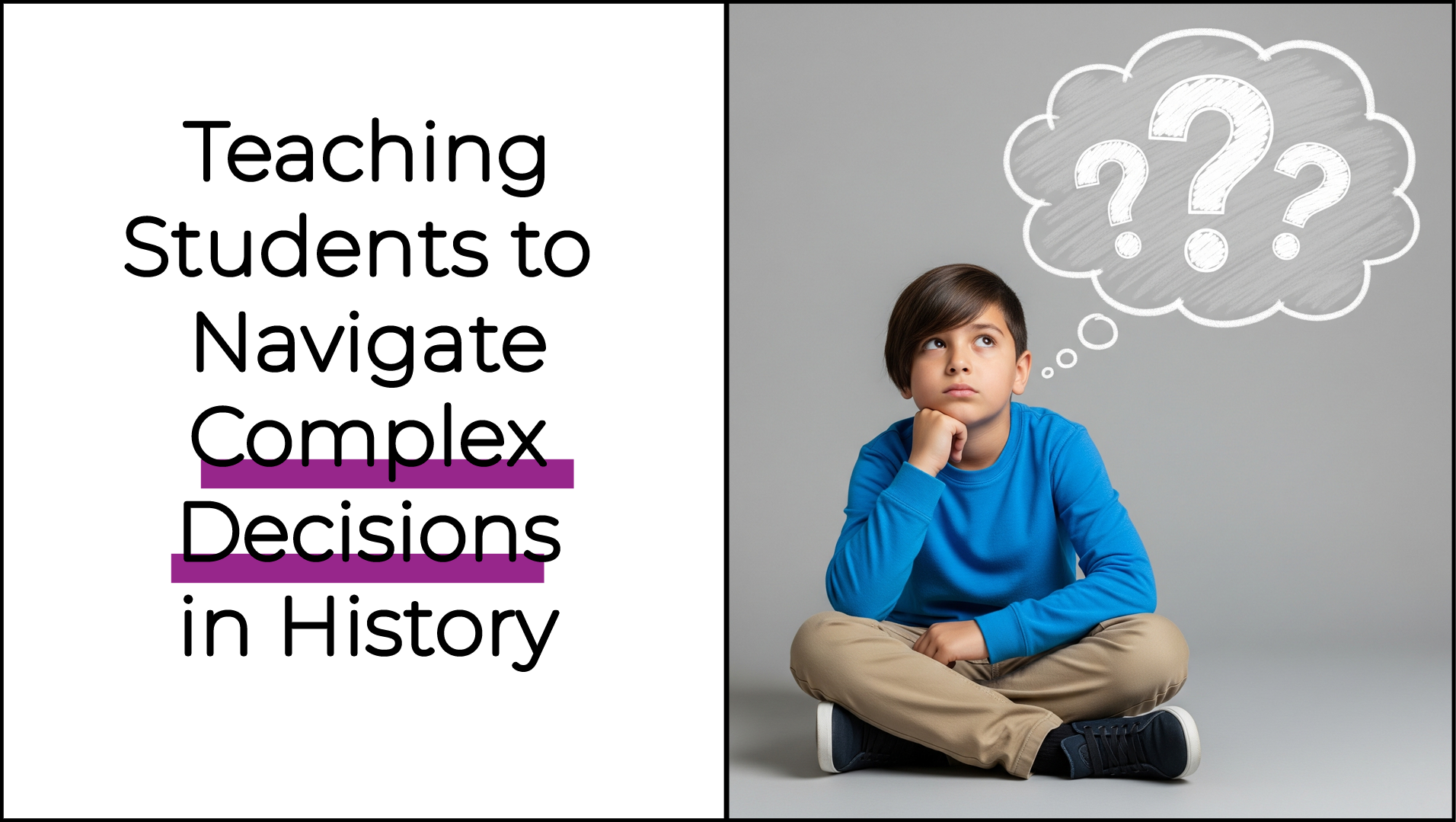From the Classroom

Detectives and Ghost Stories—When Fourth Graders Investigate the Lady in White
Halloween week brought the Vinoy Hotel Mystery. Fourth graders became 1920s detectives analyzing evidence, questioning witnesses, and building theories about Florida's Lady in White.

When History Doesn't Match the Simulation
What happens when students' dice rolls create different outcomes than history? These moments teach more about contingency and causation than any lecture could.

When Fourth Graders Hear Osceola's Voice and Understand Why Wars Begin
When my fourth graders heard Osceola’s words after living through the Second Seminole War in our classroom simulation, the silence was profound. They weren’t just memorizing facts—they were grappling with why wars begin, how policies create conflict, and what it means to understand multiple perspectives.

How to Keep Your Politics Out of Your History Classroom (Even When Teaching About Injustice)
Teaching history often means facing tough student questions about right and wrong. How do you guide them toward critical thinking without turning your classroom into a political battlefield? Here’s how to stay neutral—even when teaching about injustice.

Teaching Students to Navigate Complex Decisions in History
"But Mrs. Zema, what's the right answer?" This question comes up constantly when my fourth graders are deep in historical simulations. They want me to tell them which choice is correct after debating whether to strengthen defenses or feed hungry families. Here's what I've learned: the most powerful historical thinking happens when students navigate decisions with no clear "right" answer.
